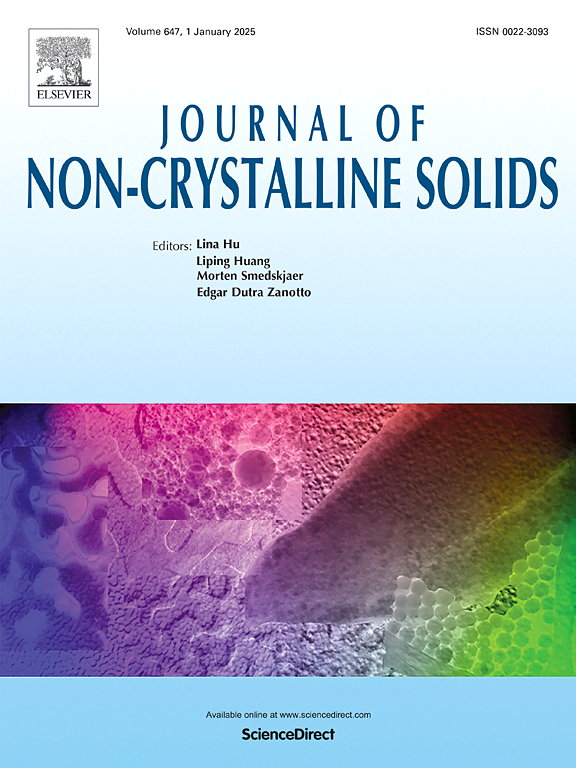清洁和氢化非晶硅表面的新模型
IF 3.2
3区 材料科学
Q1 MATERIALS SCIENCE, CERAMICS
引用次数: 0
摘要
我们提出了非晶硅(a-Si)和氢化非晶硅(a-Si:H)表面的新原子模型。a-Si模型包含4096个原子,采用局域轨道密度泛函理论得到。通过分析板坯模型(厚度约为44 Å的二维周期性板坯),我们观察到表面结构与表面电荷密度之间存在很强的相关性,这可能与STM实验相比较。在配位不足的表面原子附近加入氢原子,使悬垂键钝化并引起结构重排。我们分析了电子结构,包括状态的局域化,并注意到本体和表面缺陷结构之间的共振混合。我们还计算了氢化a-Si的经典正态模式,并在可能的情况下与实验进行了比较。我们的工作是朝着理解非晶体材料的“表面重建”的意义迈出的一步。本文章由计算机程序翻译,如有差异,请以英文原文为准。
New models of clean and hydrogenated amorphous silicon surfaces
We present new atomistic models of amorphous silicon (a-Si) and hydrogenated amorphous silicon (a-Si:H) surfaces. The a-Si model included 4096 atoms and was obtained using local orbital density functional theory. By analyzing a slab model (periodic in two dimensions with a slab about 44 Å thick), we observed a strong correlation between surface structure and surface charge density, which might be compared to STM experiments. Hydrogen atoms added near the under-coordinated surface atoms passivate dangling bonds and induce structural rearrangements. We analyze the electronic structure, including the localization of the states, and note resonant mixing between bulk and surface defect structures. We also compute the classical normal modes of the hydrogenated a-Si and compare them to experiments where possible. Our work is a step towards understanding the meaning of “surface reconstruction” for a noncrystalline material.
求助全文
通过发布文献求助,成功后即可免费获取论文全文。
去求助
来源期刊

Journal of Non-crystalline Solids
工程技术-材料科学:硅酸盐
CiteScore
6.50
自引率
11.40%
发文量
576
审稿时长
35 days
期刊介绍:
The Journal of Non-Crystalline Solids publishes review articles, research papers, and Letters to the Editor on amorphous and glassy materials, including inorganic, organic, polymeric, hybrid and metallic systems. Papers on partially glassy materials, such as glass-ceramics and glass-matrix composites, and papers involving the liquid state are also included in so far as the properties of the liquid are relevant for the formation of the solid.
In all cases the papers must demonstrate both novelty and importance to the field, by way of significant advances in understanding or application of non-crystalline solids; in the case of Letters, a compelling case must also be made for expedited handling.
 求助内容:
求助内容: 应助结果提醒方式:
应助结果提醒方式:


